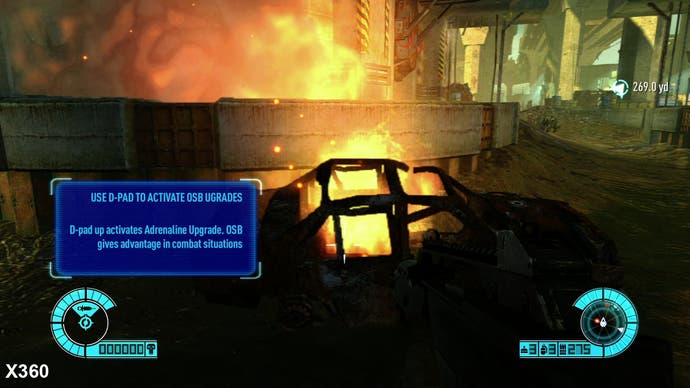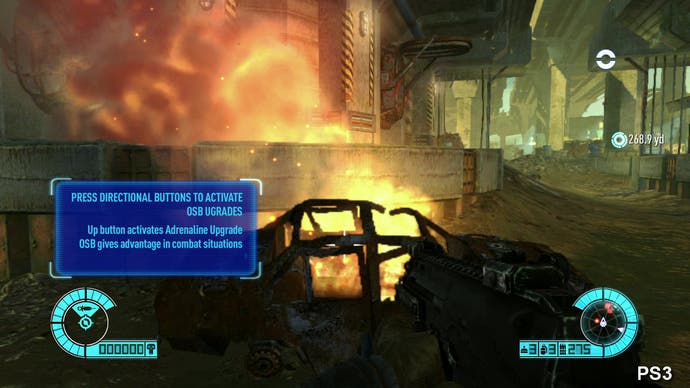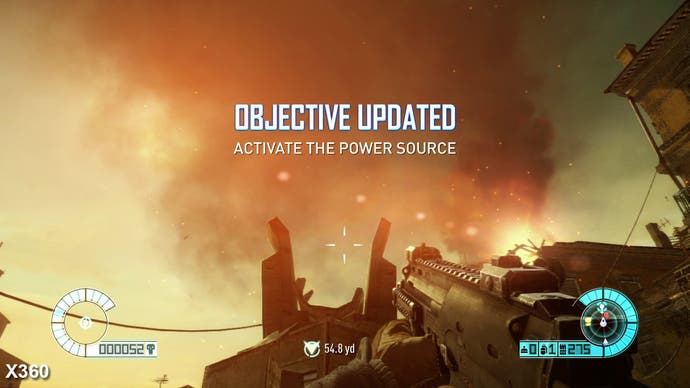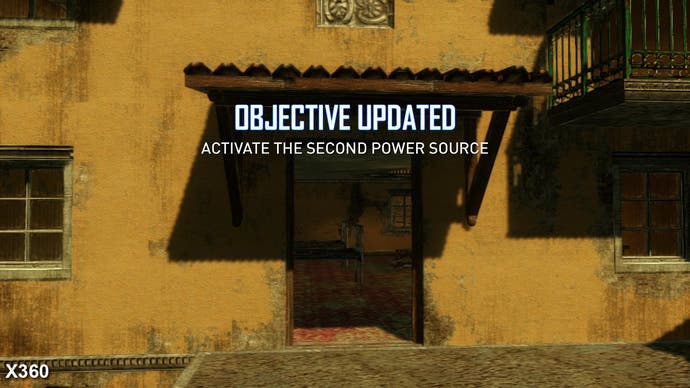Face-Off: Bodycount
Fade to Black.
As we've seen in recent titles such as Call of Juarez: The Cartel and Homefront, there are some visible streaming issues in Bodycount where the transitions between low and higher quality artwork can be clearly seen by the player as they approach parts of the environment. Generally speaking both versions are mostly the same in this regard, although we do see the 360 being noticeably behind in a couple of minor instances - intriguing, bearing in mind that the PS3 version has no HDD install and that the Xbox 360's DVD drive can outperform the Blu-ray unit in the Sony console.
Analysis of performance reveals that Bodycount targets a 30FPS update on both formats, and utilises what has become something of a standard on the majority of console games: if it hits the target frame-rate, v-sync remains engaged. However, sync is disabled when the frame-rate drops in order to maintain the fastest visual response. In theory this should also lead to a much more responsive feel from the controller, but input latency on both versions of Bodycount is poor even when the engine isn't under stress.
Looking at the video it's pretty obvious that both versions constantly fail to meet the targeted 30FPS without throwing out scores of incomplete frames. However, tearing isn't always highly visible, despite what the results reveal. Torn frames are most noticeable when a muzzle flash is emitted from your gun, and in detailed parts of the environment in which there are bigger differences between frames. Generally speaking, the more commonality there is between torn frames, the less you are likely to notice them.
That said, since the majority of your time spent in Bodycount is with your finger pulled down on the trigger, tearing is impossible to avoid. Not only that, but many frames are torn in quick succession - making the tears appear to stay on screen for longer - and the effect is particularly distracting during play. The PS3 comes off worse in this regard, seeing as the engine disengages v-sync more often in order to pump out as many frames as fast as possible, but neither platform really holds up particularly well in this area.




In terms of the graphical make-up of the game, there has been some additional tinkering to both SKUs, implemented perhaps with a focus on reducing the GPU bandwidth requirements of the game. While Bodycount doesn't fill the screen with a ton of transparent alpha-based effects to the same extent as other games (Killzone 3, Alan Wake and Resistance 3), there's still a large amount of smoke and particle effects present during heated confrontations. On top of that is the use of real-time shadows on certain environment objects and lighting to factor in, both of which have an impact overall performance.
As such, we see that the alpha buffers are rendered out in a much lower resolution than the framebuffer on both formats, leading to pixellation artifacts manifesting when these effects overlap with higher-resolution geometry. Shadows are also rendered in what looks like a very low resolution on both versions too - looking rather blocky as a result. These generally appear smoother on the 360, where a dithered filtering method is used to effectively blur the edges, while on the PS3's hardware standard PCF (percentage closer filtering) is employed, which does little to hide any artifacts.


Elsewhere we find that a strong lighting off-set bias is also present, whereby shadows appear to protrude more strongly and outward from the environment on the Sony console - on occasion this does have the effect of adding slightly more depth to the scene, but on the flipside, it can also look rather odd at times.
In conclusion, Bodycount comes across as something of a disappointment. You get a real sense that the core gameplay mechanics and AI are unfinished, while the vibrant, visual look of the game is marred by a number of unsightly graphical compromises, and perhaps a lack of engine optimisation. In particular, the performance under load, during large action sequences, often impact on the already sluggish controls and can take the fun out of all the shooting.
In that respect it's hard to recommend Bodycount as anything but a rental, or as a curio for those still waiting for a true bombastic sequel to Black. But if you really must have a go, it's the 360 version that gets the nod: the smoother frame-rate, better image quality, and a cleaner, clearer presentation make it the one to get.
Article by David Bierton.
